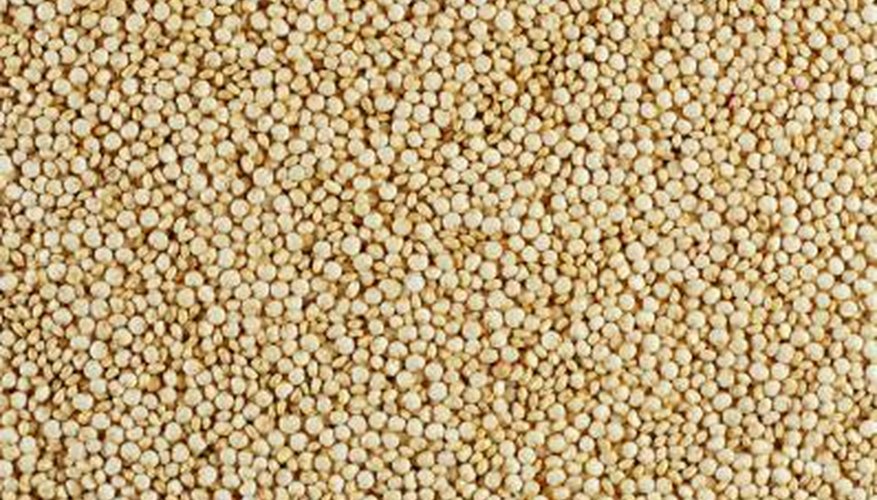Quinoa is the grain-like seed of a South American plant related to beets and spinach. It was a main staple of the Inca empire, and in recent years has been used in America as a grain alternative. It is high in protein and gluten free, although it can be contaminated by gluten from other sources during the milling process. Some consumers like to make their own quinoa flakes at home, either for freshness or to avoid gluten. Grain flakers are available in motorised or hand-cranked versions, or as an attachment for the KitchenAid stand mixer.
- Quinoa is the grain-like seed of a South American plant related to beets and spinach.
- Some consumers like to make their own quinoa flakes at home, either for freshness or to avoid gluten.
Rinse the quinoa under cold running water for 20 to 30 seconds to remove the bitter coating that is sometimes found on the grain. Most quinoa sold in America is already rinsed, but it is a sensible precaution.
Spread the quinoa in a single layer on a baking tray lined with brown paper. Allow it to dry for several hours, stirring it regularly to ensure that the moisture has evaporated. Do not attempt to mill the quinoa if it is still damp to the touch, as it will clog the flaker.
- Spread the quinoa in a single layer on a baking tray lined with brown paper.
- Do not attempt to mill the quinoa if it is still damp to the touch, as it will clog the flaker.
Attach your grain flaker to your work table or to the stand mixer, as directed by the manufacturer. Fill the hopper with the dried quinoa. If your flaker does not have a compartment to catch the milled flakes, set a bowl under the output chute.
Crank the flaker by hand, or start the motor, depending on the type of flaker you are using. If you are flaking more quinoa than the machine can hold, empty it as necessary. Continue until all the quinoa has been flaked.
TIP
Quinoa and other grains taste best when freshly milled into flakes. For the best flavour, flake your grains weekly or biweekly, rather than making up a large quantity for storage. Other grains such as oats, barley and kamut may also be flaked in the same machines. Hard grains may need to be softened overnight with a small quantity of water.
